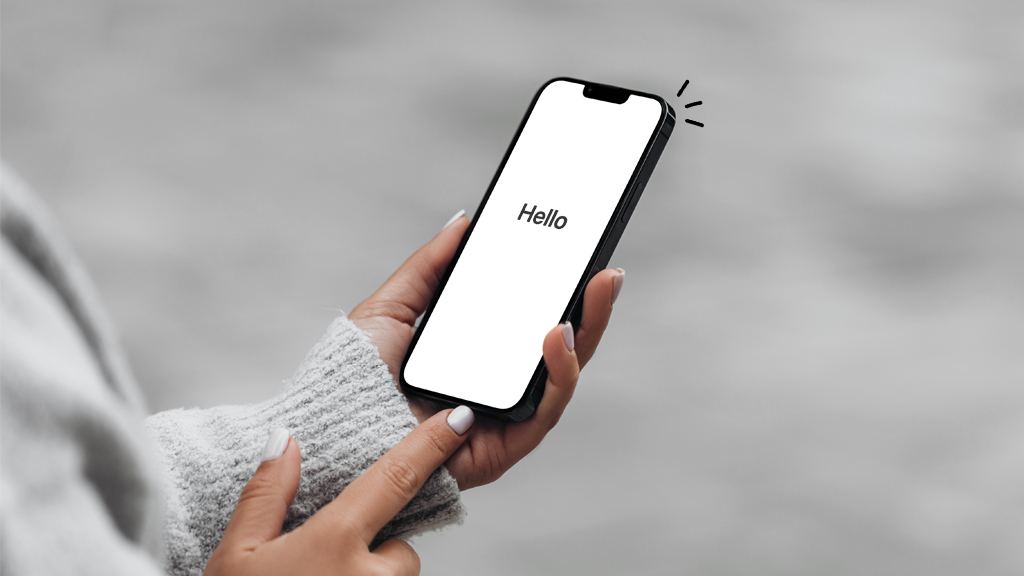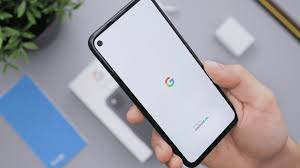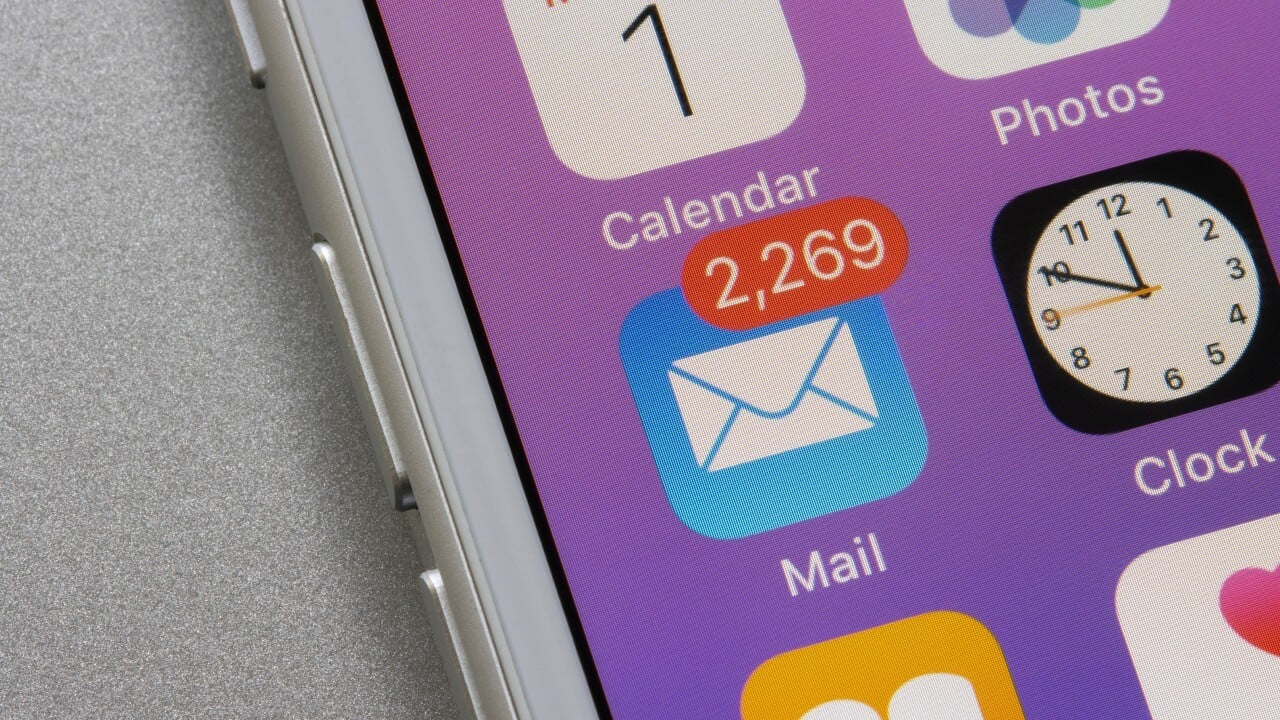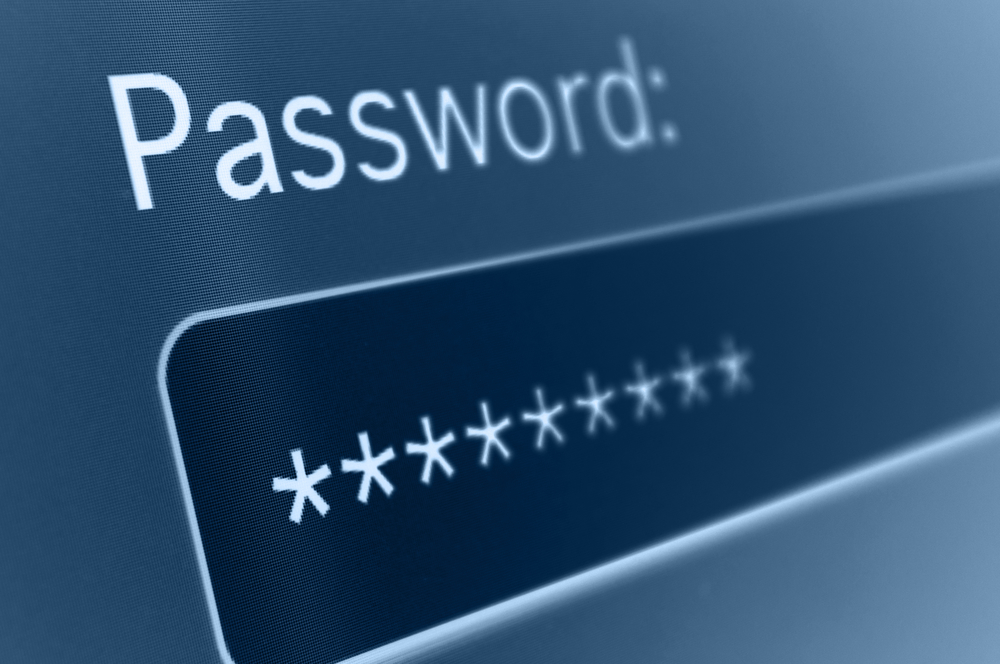
Setting up a new phone is an exciting venture, akin to unwrapping a treasure trove of possibilities. Whether you're an aficionado of the latest technology or a newcomer to the realm of smartphones, the process of configuring your new device is an essential journey. This guide will walk you through the steps on how to set up your new phone, ensuring it becomes a personalized, indispensable tool that seamlessly integrates into your daily life.
How To Restore Data From Your Old Phone To Your New Phone?
Restoring data from your old phone to a new one can be a smooth process, often facilitated by built-in features and applications. The exact steps might vary depending on the devices and operating systems involved. Here’s a generalized guide:
Using Cloud Services
- Backup Data on the Old Phone -Before transitioning to your new device, ensure your old phone's data is backed up. This typically involves using cloud services like Google Drive (for Android) or iCloud (for iOS). Back up contacts, photos, videos, messages, app data, and any other contentyou want to transfer.
- Set Up the New Phone -Turn on your new phone and follow the initial setup instructions until you reach the point where it asks if you want to restore from a backup.
- Select the Backup Source -Choose the backup source you've previously used (Google, iCloud, etc.) and log in with your credentials.
- Restore from Backup -Once logged in, the new phone will detect available backups. Select the most recent backup from your old phone and proceed with the restoration process.
- Follow On-screen Prompts -Depending on the platform and device, you might be asked which data you wish to restore. Follow the on-screen prompts, and the phone will begin restoring your old data to the new device.
Using Manufacturer's Migration/Transfer Tools
Many phone manufacturers offer their own apps or tools for data migration during setup. For instance:
- Samsung Smart Switch -Samsung devices come with a Smart Switch, which allows easy data transfer from an old device to a new one.
- Apple's Quick Start (iOS devices) -For iOS devices, Apple's Quick Start feature using the device's camera can transfer data from an old iPhone to a new one.
Manual Transfer
If cloud services or manufacturer tools are not an option, manual transfer involves:
- Connecting Devices -Connect both phones to a computer and manually transfer data using a USB cable. Explore the old phone's settings to enable file transfer or install specific software provided by the manufacturer.
- SD Cards or SIM Cards -For some data like contacts or photos, transferring via SIM cards or SD cards is an option. It might be time-consuming and less comprehensive but can be a viable method for certain types of data.
How To Restore Data On Your Android?
Back-Up With Your Google Account
Using your Google Account is a convenient way to back up your data to Google Drive through Google One. This includes app data, call history, contacts, settings, SMS and MMS messages, pictures, and videos. Google One provides 15GB of free storage shared across various Google services. For additional space, paid plans start at $1.99 a month for 100GB, $2.99 for 200GB, and $9.99 for 2TB.
To begin, go to your phone's settings and look for the "Backup & reset" or "Backup and Restore" option. If it's not immediately visible, use the search function within Settings to locate the backup option. Ensure the "Backup by Google One" switch is on and tap "Back up now" to initiate the backup. You can manage and review the details of the backup, including the types of data being backed up, and even customize what to exclude, such as photos and videos.
Another way to manage your backups is through the Google One app. If not pre-installed, download it from Google Play. Using this app, you can directly handle backups, control what content is backed up, and specify whether backups can run over a cellular connection.
Restore Data From A Previous Backup
When setting up a new device or after a reset, you can restore your data from a previous backup. During the setup process, you'll be prompted to use your old device to transfer apps, photos, contacts, and more. If you can't use the old device, continue the setup and sign into your Google account. Choose the backup to restore, enter the passcode, select the data you wish to restore, and complete the process.
For Samsung devices, a Samsung Account is necessary for backup. In the device settings, navigate to "Accounts and backup," access "Samsung Account" or "Samsung Cloud," and select "Back up data." The process is similar to Google's backup, and you can review and manage the data that gets backed up.
When restoring data with a manufacturer-specific account, access "Accounts and backup" in the device settings. Choose the "Restore data" option, select the device, review the types of content to be restored, deselect any unwanted data, and initiate the restore process. Once finished, your data will be restored on your device.
Remember, the process and options may vary depending on the manufacturer, so ensure you follow the specific instructions for your device for a seamless backup and restoration experience.
How To Restore Data On Your iPhone?
Restoring data on an iPhone is generally done through iCloud or iTunes. Here's a guide on how torestore data on your iPhone:
Restore From iCloud Backup
- Start the Setup Process - Turn on your new or freshly reset iPhone. Follow the setup instructions until you reach the "Apps & Data" screen.
- Select 'Restore from iCloud Backup' - Choose the "Restore from iCloud Backup" option. Sign in to your iCloud account using your Apple ID and password.
- Choose a Backup - Select the most relevant and recent backup from the list provided. Ensure your device is connected to a stable Wi-Fi network.
- Wait for the Restore - The device will begin downloading and restoring the data from the chosen iCloud backup. Keep your iPhone connected to Wi-Fi and power throughout the process.
Restore From iTunes Backup
- Connect Your iPhone to the Computer - Using a USB cable, connect your iPhone to a computer that has the latest version of iTunes installed.
- Open iTunes - Launch iTunes and select your iPhone when it appears. If prompted, enter your device passcode or choose to trust this computer.
- Select Restore Backup - In the Summary tab, click on "Restore Backup."
- Choose the Relevant Backup - From the list of available backups, select the most appropriate one for your device.
- Initiate the Restore - Click "Restore" and wait for the process to complete. Keep your iPhone connected until the restoration finishes.
Notes
- iCloud backups contain app data, settings, photos, messages, and more.
- iTunes backups also include similar data and can be more comprehensive.
- Ensure your iPhone is sufficiently charged or connected to a power source during the restoration process.
- For iCloud, a strong Wi-Fi connection is necessary to avoid interruptions during the download and restore process.
- The time it takes to restore depends on the size of the backup and the speed of your network connection.
How To Set Up Email On Your iOs Device?
Setting up an email account on an iOS device, such as an iPhone or iPad, can be done by following these steps:
Adding An Email Account
- Go to Settings - Open the "Settings" app on your iOS device.
- Scroll Down and Tap Mail - Scroll down and find "Mail" in the list of settings options.
- Select Accounts - Tap "Accounts" or "Accounts & Passwords" (the wording might differ depending on your iOS version).
- Add Account - Tap "Add Account" to start the process of adding a new email account.
- Choose Email Provider - Select your email provider. Common options like Google, Yahoo, Outlook, or others may have pre-configured settings.
- Enter Email and Password - Enter your email address and password associated with the account.
- Follow Authentication Steps - Follow any additional authentication steps required by your email provider. This might include two-factor authentication or additional security measures.
- Customize Account Settings - After authentication, you might be prompted to choose what you want to sync, like Mail, Contacts, Calendars, and Notes. Turn on the switches for the items you wish to sync with your device.
- Finish Setup - Once done, tap "Save" or "Done" to complete the setup process.
Manual Setup (if Your Email Provider Is Not Listed):
- Choose "Other" - If your email provider isn’t listed, select "Other" at the bottom of the list during the "Add Account" process.
- Select "Add Mail Account" - Tap "Add Mail Account" and provide your Name, Email, Password, and a Description for the account.
- Configure Settings - Choose between IMAP or POP for account type. Enter incoming and outgoing mail server details (these are usually provided by your email provider).
- Verify Settings - Ensure the information you’ve entered is correct, especially server details and login credentials.
- Save Settings - Once verified, the device will verify the settings. If correct, you’ll be able to use the email account on your iOS device.
After following these steps, you should have your email account set up on your iOS device, and you'll be able to access your emails through the Mail app. If you encounter any issues during setup, double-check the entered information and ensure you have a stable internet connection for the device to communicate with the mail servers.
How To Set Up Email On Your Android Device?
Setting up an email account on an Android device can be done by following these general steps. Please note that the steps might slightly vary based on the device model and the email app you're using:
Using The Gmail App
- Open the Gmail App - Find and open the Gmail app on your Android device.
- Access Settings - Tap on the three horizontal lines (menu) at the top left or the account icon at the top right and select "Settings."
- Add an Email Account - Tap on "Add Account" or your email address (if you've previously added an account).
- Select Email Provider - Choose your email provider. Common ones might have pre-configured settings, or you can select "Other" to manually input the settings.
- Enter Email and Password - Enter your email address and password associated with the account.
- Customize Sync Settings - Set your preferences for what you want to sync (Mail, Contacts, Calendars, etc.). The options may vary based on the email provider.
- Finish Setup - Once done, tap "Next" or "Done" to complete the setup process.
Using Other Email Apps
- Open the Email App - Locate and open the email app on your Android device. The name of the app might vary based on your device manufacturer.
- Access Settings - Look for a menu or settings icon within the app to access settings.
- Add Account - Select "Add Account" or "Setup Account" to begin adding a new email account.
- Choose Email Provider or Account Type - Select your email provider from the list or choose "Other" to manually input the settings.
- Enter Email and Password - Input your email address and associated password.
- Configure Server Settings - Manually input the incoming and outgoing server settings provided by your email provider.
- Verify and Save - Confirm the entered details and save the settings. The app will then attempt to verify and connect to your email account.
Additional Notes
- If you're setting up an account not listed, you might need to know the incoming and outgoing mail server settings provided by your email service.
- For most email providers (e.g., Gmail, Yahoo, Outlook), the email app may automatically configure the server settings based on your email address.
How To Set Up Social Media On Your Phone?
Setting up social mediaapps on your phone involves a similar process for most platforms. Here's a generalized guide on how to set up social media apps on your phone:
Download The App
- Visit the App Store -Open the respective app store on your phone (Google Play Store for Android or the App Store for iOS).
- Search for the Social Media App -Use the search bar within the app store to find the specific social media app you want to install (e.g., Facebook, Instagram, Twitter, LinkedIn).
- Download and Install -Tap on the app, then select "Install" or "Get" to download and install it on your phone.
Sign Up Or Log In
- Open the App -Once installed, open the social media app.
- Sign Up or Log In -If you already have an account, you'll log in using your existing credentials (username/email and password). If you're new to the platform, you'll have to sign up by providing the required information (name, email, phone number, etc.) and creating a username and password.
Profile Setup
- Complete Your Profile -For a new account, the app might prompt you to complete your profile by adding a profile picture, bio, and other relevant details.
- Connect with Friends -The app will often suggest connecting with friends from your contacts or by searching for people you know.
Customize Privacy Settings
Adjust Privacy Settings -Check and customize the privacy settings based on your preferences. Each social media platform has its own set of privacy controls.
Additional Tips
- Enable Notifications -Decide whether you want to receive notifications and adjust the settings accordingly.
- Explore Features -Familiarize yourself with the various features and options available on the social media app. Each platform has unique functionalities like posting, messaging, stories, etc.
Common Social Media Platforms
- Facebook -To set up Facebook, download the app, sign up with your details, and complete your profile.
- Instagram -Download the app, sign up, and create a profile. Add a profile picture and start sharing photos and stories.
- Twitter -Install the app, sign up, customize your profile, and start tweeting.
- LinkedIn -Download, sign up with your professional details, and build your network.
How To Secure Your New Phone?
Securing your new phone is crucial to protect your personal information, privacy, and the device itself from potential threats. Here are essential steps to secure your new phone:
Set A Strong Passcode Or Biometric Lock
- Passcode or PIN -Set a strong passcode or PIN to prevent unauthorized access. Use a combination that's not easily guessable.
- Biometric Lock -Use fingerprint, face, or iris recognition if available on your device for added security.
Enable Find My Device
Find My iPhone (iOS) or Find My Device (Android) -Activate this feature to remotely track, lock, or erase your device in case it's lost or stolen. It helps locate the device and protects your data.
Update Software Regularly
Install Updates -Keep your device's operating system, apps, and security software up-to-date. Updates often contain bug fixes and security patches that protect against known vulnerabilities.
Use Secure Network Connections
- Avoid Public Wi-Fi -Be cautious when using public Wi-Fi networks as they can be susceptible to hackers. Use VPNs (Virtual Private Networks) for encrypted connections.
- Enable Encryption -Turn on device encryption to protect your data in case your phone is lost or stolen.
Install Security Apps
Antivirus and Security Apps -Consider installing reputable antivirus and security apps that offer features like anti-malware, anti-theft, and privacy protection.
Use App Permissions Wisely
Manage App Permissions -Regularly review and manage app permissions. Grant access only to necessary functions like camera, contacts, location, etc.
Backup Your Data
Regular Backups -Create regular backups of your device's data. Use cloud services or connect to a computer to back up essential information.
Enable Two-Factor Authentication (2FA)
Two-Factor Authentication -Set up 2FA whenever possible for additional security. It requires a secondary code or device for accessing your accounts, making it harder for unauthorized users to access your information.
Secure Your Mobile Payments
Mobile Payment Security -If you use mobile payment apps, enable extra security features like PINs, fingerprint authentication, or biometric verification for transactions.
Be Cautious With App Downloads
Download from Official Stores -Install apps only from official app stores like Google Play Store (Android) or the App Store (iOS) to reduce the risk of downloading malware-infected apps.
How To Turn On Find My Device On Your Android?
To set up the Find My Device feature on your Android phone, follow these steps: Keep in mind that Find My Device works on devices running Android 8.0 and newer.
Compatibility And Device Requirements
Find My Device is available on devices running Android 8.0 or later. If your device is older than two years, these steps might not apply. The steps below were demonstrated using a Pixel 7 Pro. If you're using a Samsung Galaxy phone, the option may be located in Settings > Security and Privacy.
Steps To Enable Find My Device
- Access Settings -Open the Settings app. You can do this by swiping down twice for the Notification Shade and tapping the gear icon or by finding the Settings app in the App Drawer.
- Navigate to Security & Privacy -Inside the Settings app, look for the Security entry and tap it.
- Find and Open Find My Device -Within the Security settings, locate the option for Find My Device and tap it.
- Enable Find My Device -On the resulting page, toggle the ON/OFF switch for Use Find My Device until it's in the ON position.
Using Find My Device
Once Find My Device is enabled, open a web browser on your computer and go to https://www.google.com/android/find. Give the service a moment to register your device; it will appear listed on the website. This feature will help you track and manage your device's location.
Important Actions And Recommendations
- Locating Your Device -If you can't find your phone after searching various places, use the Find My Device website to locate it.
- Securing Your Phone -If you suspect the phone is misplaced but accessible, secure it through the website.
- Device Theft -In case of theft, erase the device immediately. Quick action is crucial. If you find the device later, you can log back into your Google account to restore data.
Why Find My Device Is Essential
Find My Device is a vital tool. When signed in, it grants the ability to locate, secure, or erase your Android phone in case of loss or theft. Ensure your device is registered with the service for quick action when needed.
How To Turn On Find My iPhone?
Enabling "Find My iPhone" is a valuable security feature on Apple devices, allowing you to locate, remotely lock, or erase your device in case it's lost or stolen. To turn on Find My iPhone, follow these steps:
On Your IOS Device
- Access Settings - Open the "Settings" app on your iPhone or iPad.
- Tap Your Apple ID - Look for and tap your name at the top of the Settings menu. It might say "Apple ID," "iCloud," or "Sign in to your device."
- Select iCloud - Tap "iCloud" to access iCloud settings.
- Find Find My iPhone - Scroll down and locate "Find My iPhone." It might be in the list of apps using iCloud or under the iCloud settings.
- Enable Find My iPhone - Toggle the switch next to "Find My iPhone" to turn it on. If prompted, enter your Apple ID password to confirm the activation.
On A Mac Or PC
You can also enable Find My iPhone using a computer:
- Using a Browser - Open a web browser and go to the iCloud website (icloud.com).
- Sign in - Log in with your Apple ID and password.
- Access Find My iPhone - Click on "Find iPhone" or "Find My iPhone" on the iCloud dashboard.
- Enable Find My iPhone - If it's not already enabled, you can activate it here by following the on-screen instructions.
How Find My IPhone Works
Once enabled, you can use the Find My app on another iOS device or go to the iCloud website on a computer to:
- Locate Your Device -See the current location of your device on a map.
- Play a Sound -Play a sound on your device even if it's on silent to help locate it.
- Lost Mode -Lock the device with a passcode and display a custom message on the screen.
- Erase Your Device -Erase all the data on your device remotely if recovery is unlikely or for security reasons.
Create A Strong Password In 7 Easy Steps
Creating a strong password is essential for securing your accounts and data. Here are seven easy steps to generate a robust password:
Length Matters
A longer password is harder to crack. Aim for at least 12 characters or more.
Use A Mix Of Characters
Include a combination of uppercase letters, lowercase letters, numbers, and special characters. This diversity makes your password stronger.
Avoid Common Phrases Or Words
Avoid easily guessable words, common phrases, or information linked to you, such as your name, birth date, or sequential numbers.
Utilize Passphrases
Consider creating a passphrase by stringing together unrelated words, making it easier to remember. For instance, combine unrelated words and modify some characters (e.g., "C0rrectHorse_BatteryStaple").
Don’t Reuse Passwords
Each account should have a unique password. Reusing passwords makes it easier for hackers to access multiple accounts if one is compromised.
Consider Using A Password Manager
If remembering complex passwords is challenging, consider using a password manager to store and generate strong, unique passwords for each account.
Update Regularly
Regularly update your passwords. Aim to change them every few months, especially for sensitive accounts.
Example Of A Strong Password
"R0bustP@ssw0rd$42" combines a mix of characters, numbers, and symbols while being sufficiently lengthy.
How To Set Up Your New Phone - FAQs
What Should I Do When Setting Up A New Phone?
When setting up a new phone, start by powering it on, following the on-screen prompts to select language, connect to Wi-Fi, sign in to your Google or Apple account, and personalize settings like wallpapers and app preferences.
How Do I Transfer Data To A New Phone?
To transfer data to a new phone, use built-in options like Google's "Backup and Restore" or Apple's "Transfer from iPhone" to transfer contacts, apps, photos, and settings from your old device to the new one.
Why Is It Essential To Back Up Before Setting Up A New Phone?
Backing up before setting up a new phone ensures that your old device's data is saved and can be easily transferred to the new phone, preventing data loss and facilitating a smoother transition.
What Apps Are Essential When Setting Up A New Phone?
Essential apps when setting up a new phone include a file manager, antivirus/security app, social media apps, productivity tools, messaging apps, and entertainment or media streaming services.
How Do I Ensure Security When Setting Up A New Phone?
Ensure security when setting up a new phone by enabling features like screen lock, Find My Device or Find My iPhone, two-factor authentication, and app permissions to safeguard personal information and data.
Conclusion
Congratulations! You've successfully navigated through the setup of your new phone, turning it into a tailored extension of your digital life. The endless possibilities it offers are now at your fingertips. Remember, the real charm lies not only in the initial setup but in the ongoing exploration and utilization of your device. Stay curious, keep experimenting with new features, and make the most of this powerful tool. Your new phone is not just a device, but a gateway to a world of connectivity and convenience. Embrace it and enjoy the journey ahead!




